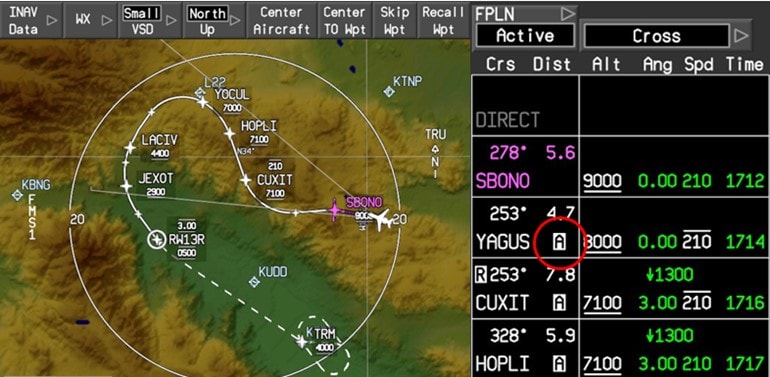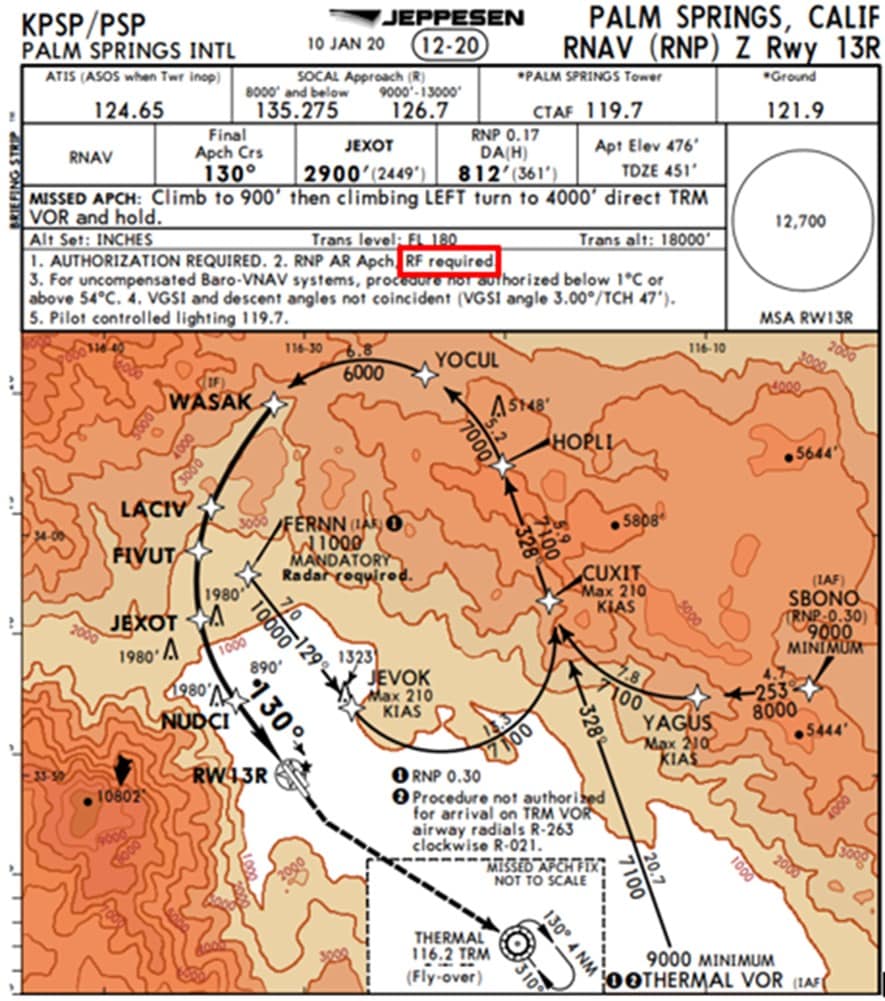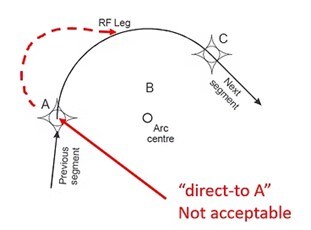-
Location
-
North America
-
Latin America
-
Asia Pacific
- |
- Sales & Service Partners
- |
-
Select Shopping Cart Account
Choose the account number for your parts ordering shopping cart. Your current cart will be saved when switching accounts.
Account# Account Name City Zip/Post Code CANCELPROCEEDMy Account
-
Industries
Industries
-
Location
-
North America
-
Latin America
-
Asia Pacific
- |
- Sales & Service Partners
- |
You are browsing the product catalog for
You are viewing the overview and resources for
- Blogs
- Identifying an RF Leg: A Guide to Radius-to-Fix Leg Detection
Your browser is not supported.
For the best experience, please access this site using the latest version of the following browsers:
By closing this window you acknowledge that your experience on this website may be degraded.
Identifying an RF Leg: A Guide to Radius-to-Fix Leg Detection
Identifying an RF Leg: A Guide to Radius-to-Fix Leg Detection
Radius-to-fix (RF) legs are commonly used in RNP AR (Authorization Required), A-RNP (Advanced RNP), and Honeywell FMS Guided Visual (FGV) procedures. Being able to identify an RF leg is important due to a number of operational considerations we’ll discuss here.
Description
RF legs are curved flight paths that enable a constant radius turn starting and ending on a fix or waypoint. The FMS computes the actual flight path, ensuring repeatable and predictable turn performance.
Benefits
RF legs are designed to provide better access with lower minimums to airports constrained by terrain and obstacles. They are also used in RNP AR procedures at large volume airports with airspace constraints, where their predictable paths allow for reduced aircraft separation and greater landing capacity.
How to Identify RF Legs
Procedures that include RF legs are coded into the FMS navigation database. As shown in Figure 1, waypoint segments containing RF legs are identified by an inverse video “A” in the FMS active flight plan, and the map display will show the curved path. The procedure chart will also contain a note stating, “RF Required,” as illustrated in Figure 2.

 Figure 2 Copyright Jeppesen, Inc. – Used by Permission
Figure 2 Copyright Jeppesen, Inc. – Used by Permission
Operational Considerations
When flying an RF leg, compliance with the desired path is essential to maintain the intended ground track. The flight crew must engage LNAV/FMS Flight Director mode and adhere to any speed restrictions. For instrument procedures, you cannot proceed directly to a fix in the approach that anchors or intercepts an RF leg. These anchor points are flyover waypoints, and large intercept angles can overwhelm the FMS, making it difficult to capture the remainder of the RF leg and complete the procedure (see Figure 3). When conducting a visual procedure, avoid large intercept angles when proceeding direct to a fix anchoring an RF leg.
 Figure 3
Figure 3
If you have any questions or operational issues, please contact Honeywell Flight Technical Services .
Supports RNP, Datalink, and Forge Flight Services for Honeywell Flight Technical Services.
Copyright © 2025 Honeywell International Inc.
Maximum File Size
Maximum Files Exceeded
Due to inactivity you will be logged out in 000 seconds.
Maximum File Size
Maximum Files Exceeded
Your documents are ready for you. Please click here to open.
Maximum File Size
Maximum Files Exceeded
There is an issue with invoices zip file download. Please go back and try again later. Thanks!
Maximum File Size
Maximum Files Exceeded
Your orders excel is ready for download. Please click here to download.
Maximum File Size
Maximum Files Exceeded
There is an issue with orders excel file download. Please go back and try again later. Thanks!

